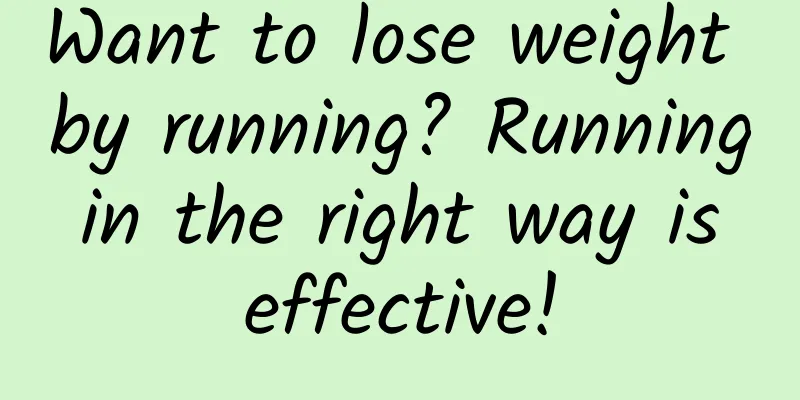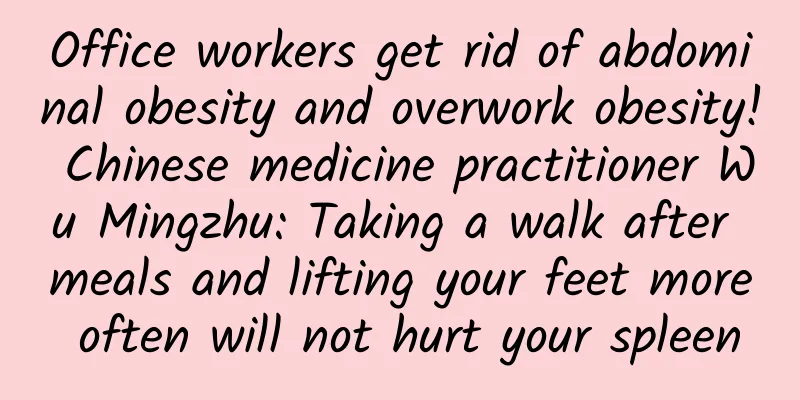Want to lose weight by running? Running in the right way is effective!

|
Marathon events are becoming more and more popular, and the related activities held each year are becoming more and more diverse. Everyone is running like crazy. In addition to it being a test of "willpower", many reasons also come from: wanting to lose weight by running! Can running help you lose weight? sure! As long as you run long enough and far enough and train enough time, long-distance running is definitely beneficial for weight loss. That’s why marathon runners are all very slim, and this is the best proof! But why do many people not see the effect of "losing weight" even after starting running? The main reasons are that the running training time is "not enough", the running distance is "not long enough", and the training frequency is "not concentrated enough"! The principle of increasing and decreasing calories, you must first understand it if you want to lose weight! In the past, I have often talked about this. If you want to lose weight, the most important thing is diet control. 70% to 80% depends on diet, and 20% is indispensable exercise! Because the biggest key to body fat accumulation is "calories". If the calories are more than what the body consumes every day, it will be converted into body fat accumulation. Therefore, "controlling the calories eaten through diet" and "consuming more calories through exercise" are two principles that must be paid attention to when aiming to lose weight! Strength interval training, high-intensity interval training, high-volume interval training, Boot Camp... these bodyweight-based exercises are becoming more and more popular. This is because they can consume a lot of calories in a "short time", so they are very effective for weight loss. Most people cannot see weight loss results quickly while running. In fact, it is because running for weight loss requires more time to accumulate results! As long as you run long and far enough, you can burn a lot of calories, because no matter how fast you run, you will burn 68 calories for every kilometer you run (of course, there will still be a difference due to weight and the amount of oxygen used by the body, or interval running can burn more calories, there is additional explanation at the end of the article)! Every kilogram of body weight contains 7,000 calories, so if you want to lose weight by running, you have to run more! Only by running long enough and long enough can the weight loss effect gradually appear! Long-distance running is a type of aerobic exercise in which the body uses oxygen to participate in energy reactions and produce energy. According to the ACSM (American College of Sports Medicine), the amount of time you should spend on aerobic exercise is: 150-250 minutes of moderate-intensity aerobic activity per week, just enough to maintain body weight. More than 250 minutes of moderate-intensity aerobic exercise per week can help you lose weight. Therefore, you must run for more than 50 minutes five days a week and maintain a slight breath-taking intensity to see the results of weight loss. As mentioned earlier about calorie consumption, for every extra kilometer you run, you can burn an extra 68 calories. Therefore, extending the training distance will also be very helpful for weight loss! Of course, as your physical fitness gradually improves, interspersing running training with "interval" running, for example: a one-minute sprint while panting, followed by three minutes of jogging to recover, will help burn more calories. To overcome the discomfort caused by running, you can do these bodyweight exercises first: When beginners start practicing running, they will definitely feel "pain here" and "soreness there", and many uncomfortable situations will occur! Because when you run, every time your foot lands on the ground, it has to bear a weight of 2-3 times your body weight; the more weight you weigh, the more pressure your body has to bear! So even for a seemingly simple sport like running, if you have a professional running coach to guide you, you can learn to run more efficiently and make running a more interesting thing! Of course, some of the following simple bodyweight strength exercises imitate running postures. In addition to training the muscle groups needed for running, these little tricks can also help you run better! Of course, even if you are not particularly fond of running, these exercises can still be incorporated into your daily training and combined into strength interval exercises. First of all, when running, if you lift your legs high enough, you can take longer steps, and "stride length" is a very important factor in running long distances (additional explanation is provided at the end of the article)! Lifting your thighs high enough will allow your ankles to have more range of motion, and your calf muscles will have more time to contract and stretch, which can also reduce the chances of calf and plantar fascia inflammation. In order to take long strides, you definitely shouldn't try to take big steps forward. This will have the opposite effect and create a braking effect! The key to increasing your stride length is: 1. The hip muscles should be strong enough 2. The range of motion of the hips should be wide enough 3. When the sole of the foot touches the ground, it can promote the rebound force Leg lifts Keeping your tummy engaged, your core tight, your chest out, and your shoulder blades squeezed, alternately stepping and pulling your thighs up parallel to the floor, letting your hands swing naturally. Focus on your hips and core muscles. Leg lift jump training Continue with the first exercise and jump on one foot, but when jumping with the other leg, pull the thigh up until it is parallel to the ground and raise the opposite hand up to increase the jump height. After landing, keep your upper body straight but slightly lean forward, bend your knees slightly, use your hips to absorb the pressure of landing, and prepare to use your hips to start the next jump. Do 10-20 jumps on one foot and then switch sides. Glute strength and foot propulsion training The starting position is a split-leg squat. Pull up your back heel, bend your front knee 90 degrees, put your center of gravity on your hips, keep your upper body upright, and tighten your core. Then use your hips to lift your back foot until your thigh is parallel to the ground, maintaining balance and stability. Then step your raised leg forward to do a split squat, but keep the soles of your feet flat on the ground and your heels on the ground. Remember to keep your front foot perpendicular to the ground. Finally, push forward with the front of the foot (starting from lifting the heel and finally pushing the ground with the toes and big toes), while simultaneously using the hips to push back to the starting position. Repeat 10-15 times on one side. The above training is also very similar to the simulation of running. When running, remember to use the strength of your hips, lift your thighs, and use the strength of your toes and big toes to push the ground. Lower abdominal strength training Remember to keep your lower back close to the ground, your legs straight, and lift your legs until they are perpendicular to the ground. This is the position suggested by the movement. Then lower them diagonally forward to 15-45 degrees from the ground, and then pull them back to the starting position. Same movement pattern, but with a weighted medicine ball clamped between your calves. Because you can bend your knees when you are weight-bearing to reduce the difficulty. Once you are used to the movement, you can practice straightening your legs. Why can’t we stop exercising? According to statistics from abroad, many people start to gain weight again 6-12 months after losing weight! In addition to not being well-controlled in diet, the most important reason is "less exercise"! Please remember, exercise and diet control are two things that are indispensable in life and cannot be stopped! Please maintain your good exercise habits, so that a good figure and health will accompany you for a long time! Additional notes at the end of the article: There are many questions raised by netizens in this article, and the additional explanations are as follows. Regarding running, in fact, until now, there are many different opinions and views among experts and doctoral students in Europe and the United States. But no matter what, all research hopes to help everyone run more efficiently, achieve better results, and even run safer! If you learn more and more, you will find that there are many specialties in sports, but when you get back to the essence, many training principles are the same! For example, let me give you an example: Why doesn’t this article mention what to do if you have knee pain? ! I can tell you that as you learn more and more functional testing and functional correction, you will know that if you have knee pain when running, the cause may not be entirely from running, but rather the accumulated pressure from incorrect posture in daily life. When running, an exercise that puts a lot of pressure on the joints, occurs, it may cause long-accumulated problems to erupt! Alternatively, different pain points, symptoms, and influencing factors can be written down on an A4-sized paper! You list the reasons, and netizens start to act as doctors and make diagnoses themselves. As a result, the damage becomes more and more serious, which is detrimental to people's health! So I won’t analyze why you have knee pain when running! There are so many reasons: anterior pelvic tilt, round shoulders, scoliosis, tight myofascia, lack of ankle mobility, collapsed arches...these may all be the reasons for your knee pain! If you haven’t met a student face to face, you shouldn’t diagnose why they have knee pain when running! Instead, we try to inform the public that they can practice training and habits that optimize their running posture to avoid further serious injuries! As the old saying goes, if you really feel uncomfortable due to exercise, please see a doctor or a therapist, because that is their expertise! The most common questions are summarized as follows: 1. Every kilometer you run will burn 68 calories, regardless of your pace? ans: This is from Dr. Jason Karp's research compilation and certification course. And I have added a proviso: your weight, maximum oxygen uptake, and maximum oxygen uptake all affect the calories you can burn while running. Pace is only about time, not distance! The faster a person runs, the more kilometers he can run in a period of time, and the more calories he can burn! For every liter of oxygen consumed, 5 calories are burned. Although running faster consumes more oxygen, we will also cover the distance in less time, so the calories burned are the same. So this shows that: if you want to run, the length of your running time is far more important than the number of kilometers. In response to another netizen’s question: Long-distance running does consume muscles! Long-term running will of course consume the muscles that the body considers to be excess, and the body's mitochondria will become more numerous and larger, gradually turning the body into one that can make good use of fat as energy. So if you want to rely on long-distance running to lose weight, this is one option. After training for a period of time, the body will of course adapt to become a physique suitable for long-distance running. But it doesn't mean that your muscles will be consumed if you suddenly run a long distance. The running certification textbook written by Dr. Jason Karp has been recognized by the American Council on Exercise (ACE) and the National Academy of Sports Medicine (NASM) and has awarded a large number of credits. It contains a more detailed explanation of running and the use of body energy. 2. "Stride length" is a very important factor in running long distance! Isn't it "cadence"? ans: Regarding this point, when we were taking running certification, there were also students, including some prestigious Taiwanese running coaches, who came up for discussion with PhDs. There are indeed different factions abroad that support different arguments. For this certification I received, the doctor believes that when your running posture is optimized and each step you take is longer, it will be more efficient than if you move your feet more times; it is like swimming, when you can stroke a longer distance at one go, it will definitely be more important and advantageous than if you slide your hands a few more times. What affects your stride length is not your height or leg length, but your "hip range of motion" and the feedback force that your muscles can generate when your feet touch the ground. Therefore, through correct posture adjustment and practice, stride length can be increased. 3. When running, do you lift your thighs high enough to allow your ankles more range of motion? ans: The article describes muscle strength exercises for running posture, which train your lower abdominal muscle strength and hip range of motion. This training method is provided by the Rebound Fitness professional sports medicine team, which is composed of Greg Cadichon, ATC, a private sports injury protection trainer for the American professional basketball team (NBA) and founder of the Chicago "Rebound Fitness" sports rehabilitation training center, John Brna, MD, the former team doctor of the professional American football Chicago Bears (NFL), and Stephanie Lesniak, DPT, a private physical therapist. It is also used to train athletes who specialize in running. Ankle mobility disorders come from what we learned when we were studying for the EBFA barefoot certification, so improving your joint mobility through daily training is one of the ways to make running safer and more effective. This article comes from: Muscle Mom Blog ※For more information, please visit the blog of Kinniku Mama |
<<: Eat to develop your natural fat burning power! Rice is a very beneficial food for weight loss
>>: Eat salad to cool down? Beware of sauce mines! Nutritionist teaches you how to eat right
Recommend
How to treat adnexitis?
How to treat adnexitis? Adnexitis should usually ...
What is the difference between cervicitis and cervical erosion
Cervicitis and cervical erosion are two different...
Reminder: Several important things to note after abortion
Speaking of abortion, many people may have heard ...
Diet care for vulvar leukoplakia
Vulvar leukoplakia is the most common gynecologic...
Is medication currently a good treatment for mild cervical erosion?
Since mild cervical erosion has a great impact on...
Is ovarian cyst a serious disease?
The severity of ovarian cysts depends on the natu...
Experts explain what is menopausal functional uterine bleeding
Female menopause is the transition from the endoc...
Kate Moss's body is big and her belly and buttocks are scary
British supermodel Kate Moss has never been afrai...
The most important things to pay attention to after abortion in daily life
Abortion is a common procedure in daily life. Abo...
What are the causes of miscarriage? There are 4 reasons
There are many reasons for miscarriage. When the ...
Traditional Chinese medicine is effective in treating chronic pelvic inflammatory disease
Traditional Chinese medicine believes that chroni...
How long can a chocolate cyst patient live?
How long can patients with chocolate cysts usuall...
What to do if you have severe cervical erosion?
What to do if you have severe cervical erosion? C...
Experts teach you four tricks to easily deal with dysmenorrhea
Although many female friends will experience dysm...
If you want to lose weight effectively and long-term, choose the Mediterranean diet!
Considering your health in the second half of you...









